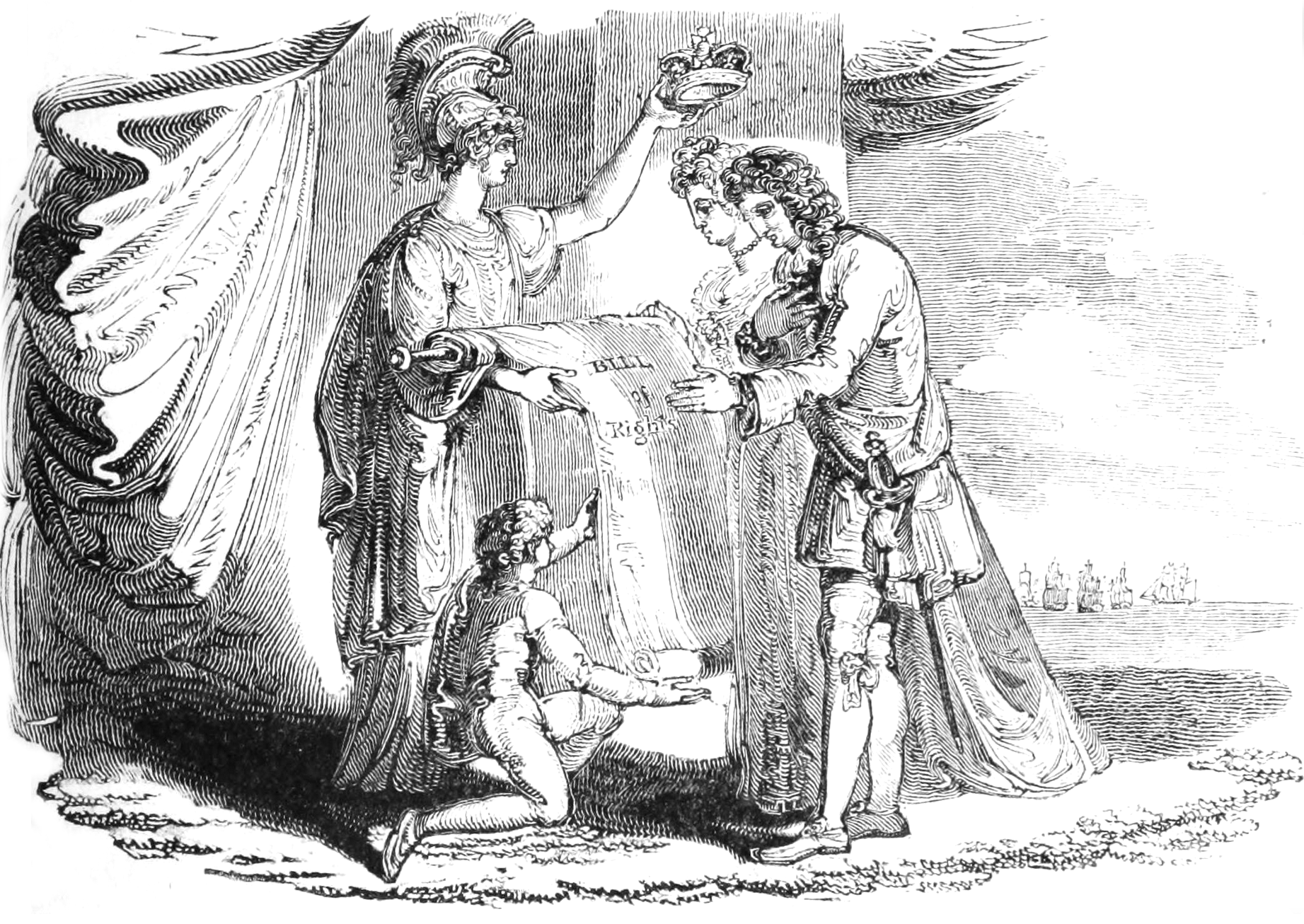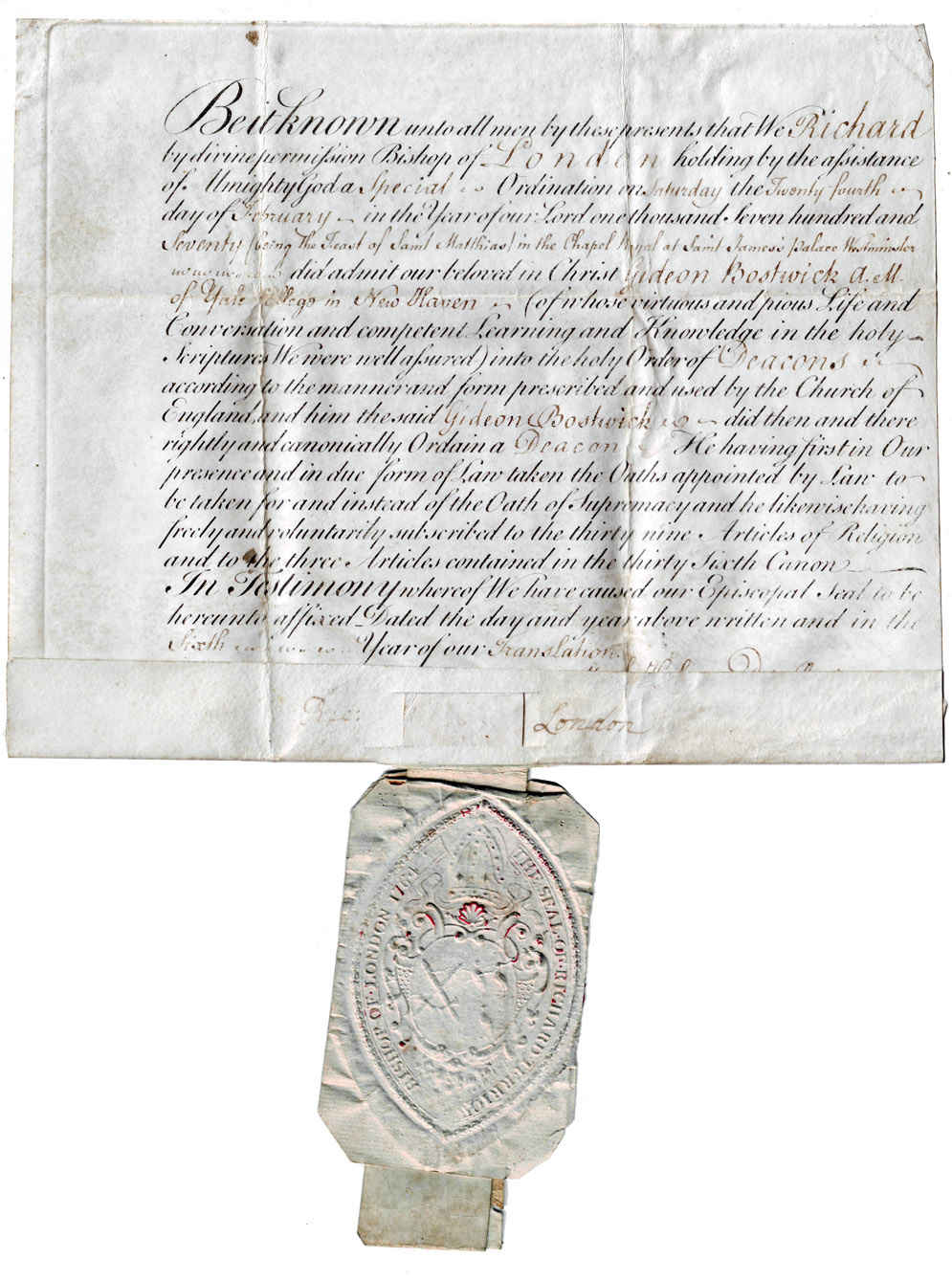|
Ecclesiastical Commission Of 1686
The Ecclesiastical Commission was an English court of enquiry established in July 1686 by James II under the Royal prerogative, and headed by Judge Jeffreys. It was declared to have jurisdiction over the governance of the Church of England also empowered to try all offences punishable under ecclesiastical law. It was disbanded shortly before the Glorious Revolution. Activities The Ecclesiastical Commission was in effect a revival of the Court of High Commission, declared illegal by the Long Parliament during the reign of Charles I by the Triennial Act, and was intended by James II as a means to move England back towards Catholicism by sanctioning those hostile to it, and enforce the king's religious policy generally. During its existence, the Commission suspended Henry Compton, the Bishop of London, from his activities as bishop, and the Vice-chancellor of Cambridge University, John Peachell, for refusing the king's commands. Due to the increasing unpopularity of James II's ... [...More Info...] [...Related Items...] OR: [Wikipedia] [Google] [Baidu] |
England
England is a Countries of the United Kingdom, country that is part of the United Kingdom. It is located on the island of Great Britain, of which it covers about 62%, and List of islands of England, more than 100 smaller adjacent islands. It shares Anglo-Scottish border, a land border with Scotland to the north and England–Wales border, another land border with Wales to the west, and is otherwise surrounded by the North Sea to the east, the English Channel to the south, the Celtic Sea to the south-west, and the Irish Sea to the west. Continental Europe lies to the south-east, and Ireland to the west. At the 2021 United Kingdom census, 2021 census, the population was 56,490,048. London is both List of urban areas in the United Kingdom, the largest city and the Capital city, capital. The area now called England was first inhabited by modern humans during the Upper Paleolithic. It takes its name from the Angles (tribe), Angles, a Germanic peoples, Germanic tribe who settled du ... [...More Info...] [...Related Items...] OR: [Wikipedia] [Google] [Baidu] |
Catholicism
The Catholic Church (), also known as the Roman Catholic Church, is the List of Christian denominations by number of members, largest Christian church, with 1.27 to 1.41 billion baptized Catholics Catholic Church by country, worldwide as of 2025. It is among the world's oldest and largest international institutions and has played a prominent role in the history and development of Western civilization.Gerald O'Collins, O'Collins, p. v (preface). The church consists of 24 Catholic particular churches and liturgical rites#Churches, ''sui iuris'' (autonomous) churches, including the Latin Church and 23 Eastern Catholic Churches, which comprise almost 3,500 dioceses and Eparchy, eparchies List of Catholic dioceses (structured view), around the world, each overseen by one or more Bishops in the Catholic Church, bishops. The pope, who is the bishop of Rome, is the Papal supremacy, chief pastor of the church. The core beliefs of Catholicism are found in the Nicene Creed. The ... [...More Info...] [...Related Items...] OR: [Wikipedia] [Google] [Baidu] |
Ecclesiastical Courts
In organized Christianity, an ecclesiastical court, also called court Christian or court spiritual, is any of certain non-adversarial courts conducted by church-approved officials having jurisdiction mainly in spiritual or religious matters. Historically, they interpret or apply canon law. One of its primary bases was the of Justinian, which is also considered the source of the civil law legal tradition. In the United Kingdom, secular courts that took over the functions of the ecclesiastic courts, e.g. in family law, are still known as ''courts ecclesiastical'' as distinct from ''courts temporal''. Medieval courts In the Middle Ages, ecclesiastical courts had much wider powers in many areas of Europe than they did after the development of nation states. They held jurisdiction over not only religious matters, but also family law, equitable relief, probate, and cases involving priests, religious communities, or public heretics. Secular courts in medieval times were numerous and d ... [...More Info...] [...Related Items...] OR: [Wikipedia] [Google] [Baidu] |
Bill Of Rights 1689
The Bill of Rights 1689 (sometimes known as the Bill of Rights 1688) is an Act of Parliament (United Kingdom), act of the Parliament of England that set out certain basic civil rights and changed the succession to the Monarchy of England, English Crown. It remains a crucial statute in UK constitutional law, English constitutional law. Largely based on the ideas of political theorist John Locke, the Bill sets out a constitutional requirement for the Crown to seek the consent of the people as represented in Parliament of England, Parliament. As well as setting limits on the powers of the monarch, it established the rights of Parliament, including regular parliaments, free elections, and parliamentary privilege. It also listed individual rights, including the prohibition of cruel and unusual punishment and the right not to pay taxes levied without the approval of Parliament. Finally, it described and condemned several misdeeds of James II of England, James II of England. The Bill ... [...More Info...] [...Related Items...] OR: [Wikipedia] [Google] [Baidu] |
William III Of England
William III (William Henry; ; 4 November 1650 – 8 March 1702), also known as William of Orange, was the sovereign Prince of Orange from birth, Stadtholder of County of Holland, Holland, County of Zeeland, Zeeland, Lordship of Utrecht, Utrecht, Guelders, and Lordship of Overijssel, Overijssel in the Dutch Republic from 1672, and List of English monarchs, King of England, Monarchy of Ireland, Ireland, and List of Scottish monarchs, Scotland from 1689 until his death in 1702. He ruled Great Britain and Ireland with his wife, Queen Mary II, and their joint reign is known as that of William and Mary. William was the only child of William II, Prince of Orange, and Mary, Princess Royal and Princess of Orange, Mary, Princess Royal, the daughter of King Charles I of England, Scotland, and Ireland. His father died a week before his birth, making William III the prince of Orange from birth. In 1677, he Cousin marriage, married his first cousin Mary, the elder daughter of his maternal u ... [...More Info...] [...Related Items...] OR: [Wikipedia] [Google] [Baidu] |
Seven Bishops
The Seven Bishops were members of the Church of England tried and acquitted for seditious libel in the Court of Kings Bench in June 1688. The very unpopular prosecution of the bishops is viewed as a significant event contributing to the November 1688 Glorious Revolution and deposition of James II. In November 1685, James II dismissed the Parliament of England for refusing to pass measures removing legal restrictions on Catholics and Protestant Nonconformists. In August 1686, the Parliament of Scotland suffered the same fate and neither body met again until 1689. James nevertheless imposed the measures in April 1687 though a royal Declaration of Indulgence which was widely opposed in both countries, including by Nonconformists who feared this would jeopardise their hopes of readmission to the Church of England. The Declaration was reissued in April 1688, and James ordered the English bishops to have it read in every church. The seven signed a petition to be excused from this ... [...More Info...] [...Related Items...] OR: [Wikipedia] [Google] [Baidu] |
John Peachell
John Peachell (1630–1690) was an English academic, Master of Magdalene College, Cambridge, and Vice-Chancellor of the University of Cambridge at the moment when James II was aiming to impose his will on the universities. Life He was son of Robert Peachell or Pechell of Fillingham, Lincolnshire, was educated at Gainsborough school, and was admitted as a sizar of Magdalene on 1 August 1645. His subsequent degrees were B.A. 1649, M.A. 1653, S.T.B. 1661, S.T.P. 1680. He was elected fellow on Smith's foundation in 1649, on Spendluffe's in 1651, and a foundation fellow in 1656. His views were royalist. In 1661 Samuel Pepys spent an evening with him at the Rose tavern in Cambridge; but he says objected to be seen walking with Peachell on account of his drinker’s nose. In 1663 he was presented by Sir John Cutts to the rectory of Childerley, Cambridgeshire, which he resigned on obtaining the rectory of Dry Drayton in 1681. He was also presented to the vicarage of Stanwix in Cumbe ... [...More Info...] [...Related Items...] OR: [Wikipedia] [Google] [Baidu] |
Bishop Of London
The bishop of London is the Ordinary (church officer), ordinary of the Church of England's Diocese of London in the Province of Canterbury. By custom the Bishop is also Dean of the Chapel Royal since 1723. The diocese covers of 17 boroughs of Greater London north of the Thames, River Thames (historically the City of London and the County of Middlesex) and a small part of the County of Surrey (the district of Borough of Spelthorne, Spelthorne, historically part of Middlesex). The Episcopal see, see is in the City of London, where the seat is St Paul's Cathedral, which was founded as a cathedral in 604 and was rebuilt from 1675 following the Great Fire of London (1666). Third in seniority in the Church of England after the archbishops of Archbishop of Canterbury, Canterbury and Archbishop of York, York, the bishop is one of five senior bishops who sit as of right as one of the 26 Lords Spiritual in the House of Lords (for the remaining diocesan bishops of lesser rank, seats are ... [...More Info...] [...Related Items...] OR: [Wikipedia] [Google] [Baidu] |
Henry Compton (bishop)
Henry Compton ( – 7 July 1713) was an Anglican clergyman who served as the Bishop of London from 1675 to 1713. Early life Compton was born the sixth and youngest son of the 2nd Earl of Northampton. He was educated at The Queen's College, Oxford, but left in 1654 without a degree, and then travelled in Europe. After the restoration of Charles II in 1660 he became a cornet in his brother Charles's troop of the Royal Regiment of Horse, but soon quit the army for the church. After a further period of study at Cambridge and again at Oxford, he graduated as a D.D. in 1669. He held various livings, including rector of Cottenham, and Witney. Episcopal career He was made Bishop of Oxford in 1674, and in the following year was translated to the see of London, and also appointed Dean of the Chapel Royal. He was also appointed a member of the Privy Council, and entrusted with the education of the two princesses, Mary and Anne. He showed a liberality most unusual at the time to ... [...More Info...] [...Related Items...] OR: [Wikipedia] [Google] [Baidu] |
Triennial Act
The Triennial Act 1640 ( 16 Cha. 1. c. 1), also known as the Dissolution Act, was an act passed on 15 February 1641,27. The Triennial Act Constitution Society Accessed 7 May 2008 by the English , during the reign of King Charles I. The act required that |
James II Of England
James II and VII (14 October 1633 – 16 September 1701) was King of England and Monarchy of Ireland, Ireland as James II and King of Scotland as James VII from the death of his elder brother, Charles II of England, Charles II, on 6 February 1685, until he was deposed in the 1688 Glorious Revolution. The last Catholic monarch of Kingdom of England, England, Kingdom of Scotland, Scotland, and Kingdom of Ireland, Ireland, his reign is now remembered primarily for conflicts over religion. However, it also involved struggles over the principles of Absolute monarchy, absolutism and divine right of kings, with his deposition ending a century of political and civil strife by confirming the primacy of the English Parliament over the Crown. James was the second surviving son of Charles I of England and Henrietta Maria of France, and was created Duke of York at birth. He succeeded to the throne aged 51 with widespread support. The general public were reluctant to undermine the principle ... [...More Info...] [...Related Items...] OR: [Wikipedia] [Google] [Baidu] |





